Understanding Telescope Magnification: A Deep Dive

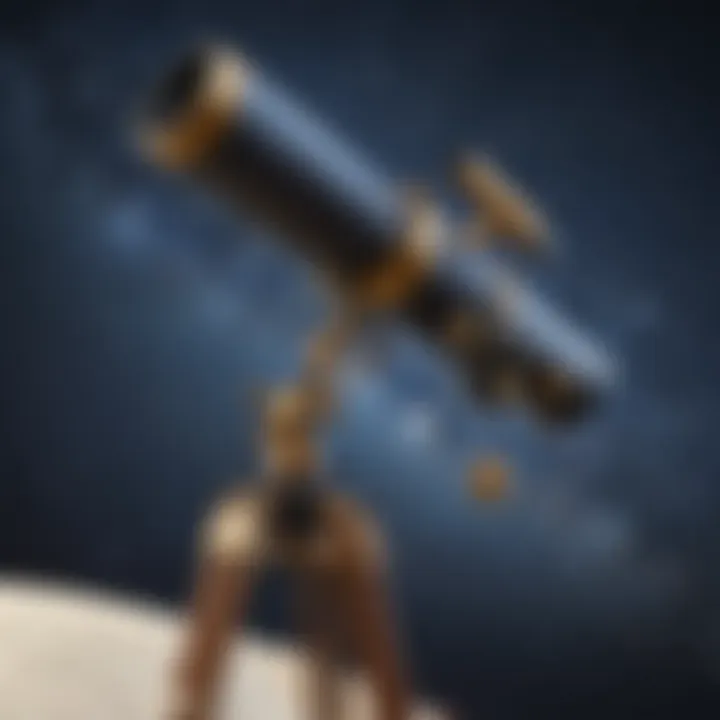
Intro
Telescope magnification is a fundamental concept in astronomy that significantly affects how we observe celestial bodies. It determines how close we can appear to the stars, planets, and other astronomical phenomena. This article will guide you through the intricacies of magnification, its relationship with aperture size and focal length, and its practical implications. By understanding these elements, amateur astronomers can make more informed choices when selecting telescopes and using them effectively.
Science Fun Facts
Here are some interesting tidbits related to telescope usage and magnification:
- Galileo's Telescope: Galileo Galilei, the father of modern astronomy, used a telescope with a 20x magnification to discover Jupiter's moons in the early 1600s.
- The Hubble Space Telescope: This remarkable instrument has a magnification rate of about 100,000 times. It allows scientists to capture images of distant galaxies, providing valuable data that enhances our understanding of the universe.
- Visible Light: The average human eye can typically resolve objects separated by about 1 arcminute, which is roughly the size of a dime viewed from about 75 feet away. Telescopes can greatly improve this ability, making far-off objects visible and clear.
"Magnification is not just about seeing closer; it’s about revealing the details that make the universe so fascinating."
Understanding Magnification
Magnification in a telescope is expressed as a ratio. It indicates how many times larger an object appears through the telescope compared to viewing it with the naked eye. For example, a magnification of 50x means the object appears fifty times larger.
To calculate the magnification, you can use the following formula:
Where the focal length is measured in millimeters. This formula shows the direct relationship between the telescope's specifications and the chosen eyepiece. Choosing the right eyepiece is essential to achieving the desired magnification.
Aperture Size and Its Importance
Aperture is the diameter of the telescope's main lens or mirror. It plays a crucial role in determining not only how much light the telescope can collect but also the clarity and brightness of the image. A larger aperture allows more light to enter the telescope, leading to a brighter view of celestial objects.
- Small Aperture (e.g., 60mm): Good for the Moon and some bright planets.
- Medium Aperture (e.g., 100mm): Better suited for deep-sky objects, like star clusters.
- Large Aperture (e.g., 200mm and above): Excellent for faint objects and more detailed views of planets.
Finale of Section
In this section, we have explored some fun facts about telescope magnification and explained its basic principles. Understanding how magnification works and how it relates to aperture can empower future astronomers to make better decisions about their telescopes. In the next section, we will focus on practical applications of magnification and how it impacts the viewing experience.
Prolusion to Telescope Magnification
Understanding telescope magnification is pivotal for both amateur and experienced astronomers. Magnification not only defines how much larger celestial objects appear through the telescope but also significantly impacts the quality of observations. It’s essential to grasp the concept of magnification to make informed decisions about telescope choice and use.
When astronomers discuss magnification, they often mention it in the context of observing planets, stars, and other celestial phenomena. Proper knowledge of this aspect enables users to find the balance between enlarged views and the quality of those views. A common misconception is that higher magnification always leads to better images. However, other factors must be taken into account. These include the telescope's aperture size, which collects more light, and atmospheric conditions that often affect visibility regardless of magnification settings.
The importance of understanding magnification is further highlighted when comparing different telescope types. Each type of telescope—be it a refractor, reflector, or catadioptric—provides distinct advantages in terms of magnification capabilities. Knowing these nuances helps users select the right equipment suited to their specific needs, enhancing their overall observational experience.
Investing time in understanding telescope magnification is beneficial for anyone keen on astronomy. The insights gained from this knowledge can lead to more rewarding observations and a deeper appreciation for the universe.
Defining Telescope Magnification
Telescope magnification is defined as the ratio of the apparent size of an object viewed through a telescope compared to its size observed with the naked eye. The formula to calculate magnification is simple:
In this equation, the focal length of the telescope is the distance over which light is brought to focus, while the focal length of the eyepiece determines how the light is magnified. For instance, if a telescope has a focal length of 1000 mm and the eyepiece has a focal length of 10 mm, then the magnification is 100x.
Understanding this definition is the first step towards mastering telescope magnification. Knowing how to calculate it allows astronomers, whether seasoned or new to the field, to predict how much larger and clearer they will be able to see celestial targets.
Importance of Magnification in Astronomy
The importance of magnification can not be overstated. It plays a crucial role when astronomers try to observe distant celestial bodies. When one observes the Moon or planets such as Jupiter, an appropriate level of magnification is vital for capturing details.
High magnification can reveal intricate features, such as the craters on the Moon or the bands of clouds on Jupiter. However, this comes with trade-offs. As magnification increases, the image can become less stable and more difficult to focus, particularly if atmospheric conditions are not favorable. Thus, choosing the right magnification is often a balancing act between desired detail and image quality.
Additionally, magnification influences the field of view. Higher magnification reduces the field of view, making it challenging to locate objects in the sky. Astronomers need to find a balance to ensure that while they may want to zoom in on a galaxy, they still have a sufficient frame to find it.
In summary, magnification is a double-edged sword in astronomy. It can enhance the observer's experience but must be chosen carefully to avoid losing image quality.
Thus, comprehending telescope magnification aids in optimizing observing conditions and enhancing the understanding of celestial mechanics.
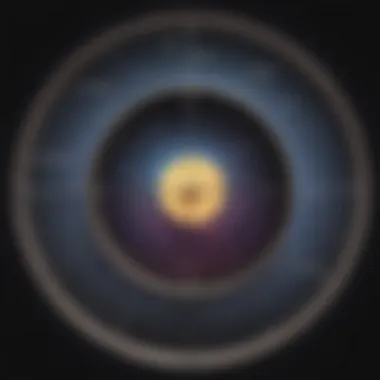
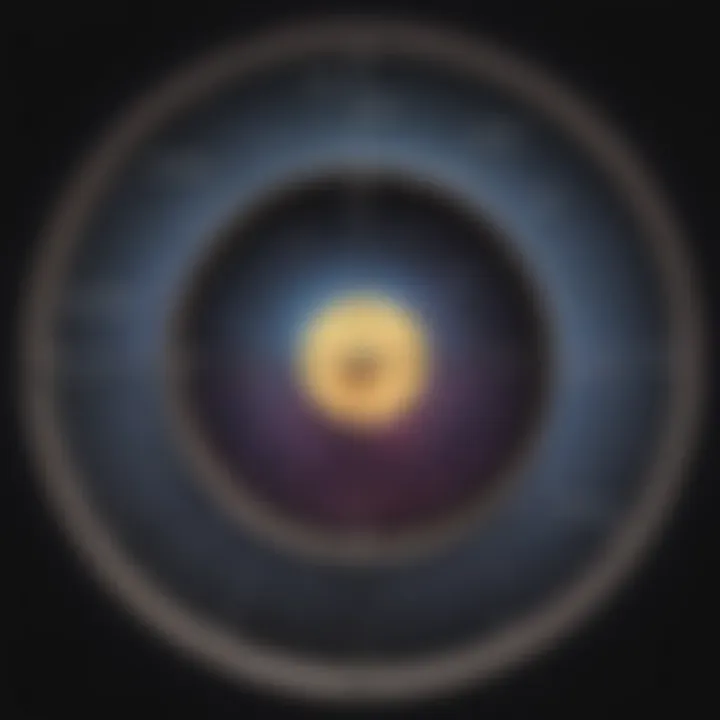
How Magnification Works
Understanding how magnification works is crucial for anyone seeking to explore the night sky with a telescope. By grasping this concept, astronomers can make informed choices about their equipment and the best practices for stargazing. Magnification does not operate in isolation; it interacts with various factors, including the telescope's design, aperture size, and the chosen eyepiece. Consequently, knowing how these aspects play together can lead to better observational experiences.
Basic Principles of Magnification
Magnification in telescopes refers to the extent to which an object appears larger when viewed through the telescope compared to the naked eye. The formula for calculating magnification is straightforward: it is the focal length of the telescope divided by the focal length of the eyepiece. This relationship shows how the choice of eyepiece greatly influences the overall magnification. A longer focal length telescope will provide better magnification when paired with an appropriate eyepiece.
In practice, the apparent size of celestial objects seems more significant with higher magnification. However, it is important to remember that magnification alone does not improve the clarity of the image.
Relation to Focal Length
Focal length plays a pivotal role in understanding magnification. It is the distance from the lens or mirror to the point where the light converges to form the image. For telescopes, a longer focal length means greater potential for magnification. This characteristic differs across telescope types, such as refractors, reflectors, and catadioptrics. Each type utilizes lenses and mirrors uniquely, influencing how the focal length affects the viewing experience.
When selecting a telescope, amateur astronomers need to consider the relationship between focal length and the type of objects they wish to observe. For example, deep-sky objects often benefit from longer focal lengths, while shorter focal lengths can be more suitable for wider fields of view.
Calculating Effective Magnification
Calculating effective magnification involves determining the magnification produced by the eyepiece used with your telescope. This is essential for making choices that align with your observing goals. The formula is:
For example, if you have a telescope with a focal length of 1000 mm and use an eyepiece of 10 mm, the calculation will be:
This means that objects will appear 100 times larger than how they appear with the unaided eye. However, it is crucial to bear in mind that higher magnification does not automatically improve the view. Details can become less distinct due to various factors such as atmospheric conditions and telescope quality. Understanding effective magnification enables astronomers to set realistic expectations before heading out for observation.
Factors Influencing Telescope Magnification
Understanding the various factors that influence telescope magnification is essential for anyone interested in astronomy. Each element plays a crucial role in determining how well celestial objects can be observed. In this section, we will break down the most significant factors: aperture size, eyepiece selection criteria, and atmospheric conditions. Each of these elements not only affects magnification but also impacts the overall viewing experience.
Aperture Size and Its Role
Aperture size is the diameter of the telescope's main lens or mirror. It directly affects how much light the telescope can collect. The larger the aperture, the more light it gathers, enhancing visibility of faint celestial objects.
For example, a telescope with a 4-inch aperture can see some details on the Moon and planets, but it may struggle with deep-sky objects. However, a telescope with an 8-inch aperture can reveal previously hidden details in those same deep-sky objects. Larger apertures provide:
- Increased light-gathering ability.
- Better resolution, allowing for clearer images.
- Improved performance in low-light conditions.
In essence, a larger aperture leads to better potential for magnification and detail. However, larger telescopes are also heavier and may require more stable mounts to support them, which is an important consideration for users.
Eyepiece Selection Criteria
The eyepiece, or ocular lens, is what you look through when using a telescope. Selecting the right eyepiece is critical because it determines the magnification power. Different eyepieces come with various focal lengths, which dictates how much they magnify the image. Shorter focal lengths yield higher magnification but can reduce the field of view.
When choosing eyepieces, consider:
- Focal Length: A shorter focal length gives higher magnification. However, too high of magnification will often lead to blurry images.
- Field of View: Some eyepieces provide a wider viewing area, making it easier to track moving objects.
- Eye Relief: This is the distance from the eyepiece you need to hold your eye to see the full view. It is particularly important for those wearing glasses.
The ability to switch between eyepieces means you can often customize your viewing experience based on the object you are observing.
Atmospheric Conditions and Their Impact
Light pollution and atmospheric turbulence can greatly affect telescope performance and magnification. Conditions such as heat waves, humidity, and a lot of light from cities can distort images viewed through a telescope. This distortion can degrade the quality of your observations, regardless of how powerful your telescope is.
Key points about atmospheric conditions:
- Stability of the atmosphere: If the atmosphere is turbulent, images can appear wavy or unclear, even with good magnification.
- Seeing conditions: This term describes how well details can be distinguished. Clear nights with minimal clouds and still air are best for astronomical observation.
- Light pollution: This affects how well you can see faint stars and nebulae. Observing from rural areas with less light pollution will enhance visibility and detail.
Common Misconceptions About Magnification
Understanding telescope magnification brings clarity to common misbeliefs. Many novice astronomers assume that increasing magnification will always enhance the observing experience. However, this viewpoint overlooks essential factors that govern visual quality. By addressing these misconceptions, one can develop a more nuanced appreciation for telescope usage and maximize the visibility of celestial objects.

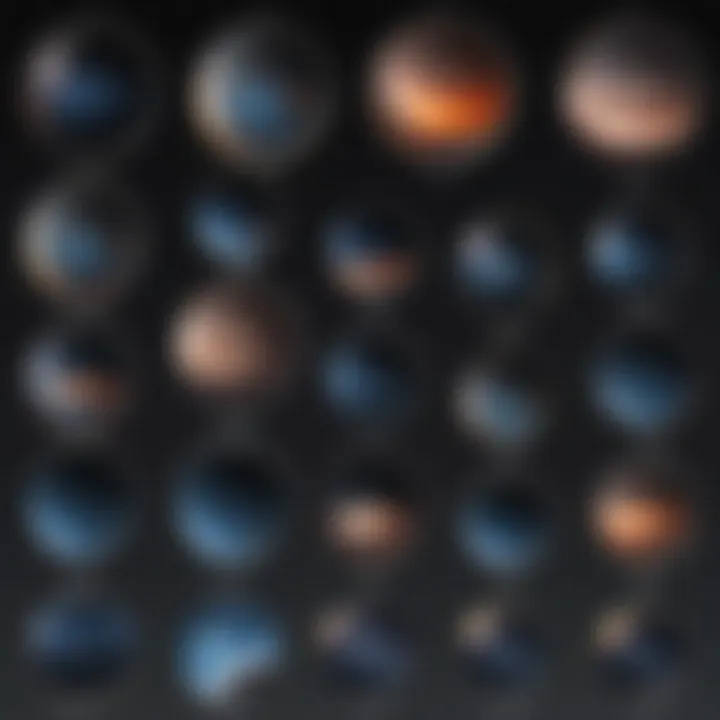
Higher Magnification Equals Better Views
A prevalent misconception among budding astronomers is the belief that higher magnification yields more detailed views of distant objects. While it is true that increasing magnification allows observers to see finer details, this is not an absolute guarantee of improved visibility.
- Limitations of Higher Magnification: When magnification exceeds a telescope’s effective resolution, images can become blurry or distorted. This happens because atmospheric conditions or optical limitations may degrade the quality of the image.
- Optimal Magnification: Each telescope has a recommended maximum magnification based on its aperture and focal length. For example, a 4-inch telescope may perform optimally at around 200x magnification. Beyond this point, the expected benefits diminish significantly, and clarity can suffer.
Magnification Versus Resolution
Another critical distinction is between magnification and resolution. Some people conflate these two concepts, but understanding their interplay is crucial for effective observational astronomy.
- Definition of Resolution: Resolution refers to a telescope’s ability to distinguish between two closely spaced objects. It depends largely on the aperture size. A larger aperture allows more light to enter, leading to better resolution.
- Effects on Viewing: High magnification can reveal more detail, yet without an adequate resolution, those details can remain indistinct. For example, when viewing a double star at high magnification without sufficient resolution, the stars might appear as a single blur instead of two distinct points.
Magnification amplifies the view, but resolution determines the clarity. Both elements are essential for a fruitful observing session.
In summary, fostering correct expectations about magnification and resolution can enhance the experience for amateur astronomers. Recognizing that higher magnification does not necessarily equate to better views and that resolution affects what can be seen will result in more satisfying astronomy sessions and a deeper fascination with celestial observation.
Practical Considerations for Amateur Astronomers
Picking the right telescope magnification is crucial for anyone looking to start their journey in astronomy. It impacts not only what one can observe but also the clarity and quality of those observations. Amateur astronomers, particularly, must navigate various factors that can affect their experience when observing celestial objects. Understanding these practical considerations enables more successful stargazing sessions.
Choosing the Right Magnification
When selecting a telescope, the first question often revolves around magnification. However, it is vital to remember that higher magnification does not automatically equate to better images. The key is to find a balance that complements the telescope's optical design and its aperture size. Each telescope type has a limit to effective magnification, often stated as 50 times the diameter of the objective lens in millimeters. This means that a 100mm telescope should ideally not exceed 500x magnification.
Many eyepieces offer different focal lengths. For example, a 10mm eyepiece in a telescope with a focal length of 1000mm would give 100x magnification. Moreover, the conditions under which one observes play an important role. For instance, magnifying too much during poor atmospheric conditions can lead to blurriness. Therefore, a recommended approach is to start with lower magnifications to find a comfortable viewing experience, especially when observing planets or lunar features.
Realistic Expectations During Observations
It is crucial for amateur astronomers to manage their expectations when it comes to telescope usage and what they can see. Clear nights and dark skies will yield different results compared to urban environments with light pollution. Thus, the location from which observations are made has a significant impact on visibility.
Additionally, not all celestial events will appear as visually stunning through the eyepiece. For instance, a distant galaxy may look less impressive compared to the vibrant details of the Moon. Accepting this fundamental truth helps to enrich the experience. Furthermore, observing can be hampered by atmospheric turbulence. Conditions like humidity or wind can distort images, making even high-end telescopes appear to provide sub-par views.
Important Notes
"Higher magnification does not guarantee better performance; clarity depends on the telescope and environmental conditions."
In summary, amateur astronomers should avoid overestimating what they can achieve with magnification alone. Instead, by recognizing the limitations and focusing on technique, they can appreciate the beauty of the universe in a more meaningful way.
Comparative Analysis of Telescope Types
Understanding the types of telescopes is essential for amateur astronomers and anyone interested in observing celestial bodies. Each type of telescope has unique attributes that impact magnification, clarity, and user experience. Knowing the strengths and weaknesses of refractor, reflector, and catadioptric telescopes helps in selecting the most suitable option based on individual needs. This section will explore these three major types in detail, allowing readers to make informed choices when purchasing or using telescopes.
Refractor Telescopes
Refractor telescopes utilize lenses to gather and focus light. This design can provide very sharp and clear images, which is one of the primary reasons for their popularity. They have a simple structure and often require less maintenance. There are two main types: achromatic and apochromatic. Achromatic telescopes are less expensive and are good for viewing planets and the moon. On the other hand, apochromatic telescopes offer better color correction and are ideal for astrophotography.
Here are the advantages of refractor telescopes:
- Stability: The design tends to be less affected by the atmosphere.
- Durability: Lenses do not require realignment as mirrors do in reflector telescopes.
- Ease of Use: They are usually straightforward to set up.
However, refractors have some limitations. They can be more expensive per inch of aperture compared to reflectors, which limits light-gathering capabilities. Additionally, long focal lengths may lead to narrow fields of view.
Reflector Telescopes
Reflector telescopes use mirrors rather than lenses. This allows for larger apertures at a lower cost. They gather more light, making them suitable for observing dim objects like galaxies and nebulae. The most famous type is the Newtonian reflector, featuring a simple design that combines performance with affordability.
The main benefits of reflector telescopes include:
- Affordability: They provide a lot of aperture for the price.
- Light Gathering: Larger mirrors can collect more light than lenses of the same cost.
- Versatility: They can be used for a variety of astronomical observations.
However, reflectors require more maintenance because mirrors need regular alignment and cleaning. They are also more sensitive to environmental factors like dust and humidity, which can affect image quality.
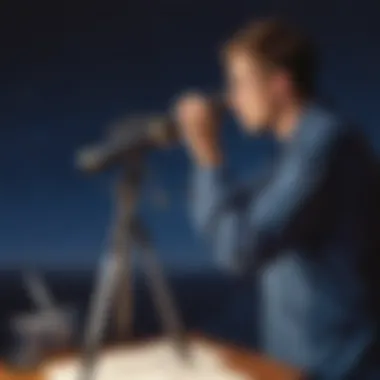

Catadioptric Telescopes
Catadioptric telescopes combine lenses and mirrors, using both elements to achieve enhanced image quality. They often have a compact design, making them portable and easy to store. Popular designs include Schmidt-Cassegrain and Maksutov-Cassegrain.
The advantages of catadioptric telescopes include:
- Compactness: They are often smaller and lighter than other types, making them ideal for travel.
- Image Quality: They provide a good balance of clarity and brightness.
- Versatile: Suitable for both planetary and deep-sky observations.
Despite these benefits, catadioptric telescopes can be more complex to set up. They also fall on the pricier side, which may discourage entry-level astronomers.
"Understanding the different types of telescopes allows astronomers to maximize their observational experience and enjoyment."
Advanced Techniques in Magnification
Advanced techniques in magnification are essential for astronomers who want to enhance their observations and gather greater details from celestial objects. While understanding the basics of magnification is helpful, employing advanced methods can significantly improve the quality of astronomical images. Two prominent techniques in this area are stacking images and using filters. These approaches provide unique benefits that allow both amateur and experienced astronomers to achieve better visibility and clarity in their observations. Here, we will explore these techniques and their impact on the observational process.
Stacking Images for Greater Detail
Stacking images refers to the technique of taking multiple photographs of the same celestial object and combining them to produce a single, clearer image. This method enhances detail and reduces noise, which often affects individual images captured through telescopes. Image stacking is particularly beneficial when observing faint or distant objects that are challenging to see clearly.
Benefits of Stacking Images:
- Enhanced Detail: By combining several images, astronomers can identify faint structures that might be invisible in a single capture.
- Noise Reduction: Stacking helps minimize random noise that may distort the image quality, providing a sharper view overall.
- Dynamic Range Improvement: This technique allows for better representation of bright and dark areas within a single image, making details clearer.
- Data Preservation: Stacked images retain information better, providing a more comprehensive view of the object being observed.
Considerations for Stacking:
- Ensure all images are taken under similar conditions to achieve consistent results.
- Use software specifically designed for stacking astronomical images, such as RegiStax or DeepSkyStacker.
In summary, stacking images is valuable for astronomers seeking to elevate their imaging skills and enhance the visibility of faint celestial phenomena.
Using Filters to Enhance Visibility
Using filters is another advanced technique that can improve how celestial objects appear through a telescope. Filters typically come in various types that serve different purposes, from enhancing contrast to reducing the glare of bright objects. They play a crucial role in observational astronomy by enabling users to capture details that are otherwise difficult to discern.
Types of Filters and Their Functions:
- Color Filters: These filters enhance specifics hues in celestial objects, making features more visible. For instance, using a green filter can help show the details on Mars.
- Neutral Density Filters: These reduce overall brightness without distorting colors, useful when observing bright objects such as the Moon.
- Light Pollution Filters: These help to block out artificial light from urban areas, improving the visibility of faint objects in the night sky.
Benefits of Using Filters:
- Improved Contrast: Filters can increase the visibility of surface features and details.
- Specifically Targeted Observations: With the right filter, astronomers can focus on specific characteristics of a celestial body.
- Easier Viewing of Faint Objects: Filters can help observers detect less bright objects effectively by blocking unwanted light.
Using filters in combination with stacking images extends the potential for enhanced observation and imaging. Both techniques are integral to modern amateur astronomy and can significantly contribute to the quality of observations.
"The combination of stacking images and filters can transform your understanding of the cosmos, revealing layers of detail previously hidden in the darkness."
In essence, employing advanced techniques in telescope magnification like stacking images and using filters equips astronomers with powerful tools to refine their observation practices. Ven incorporating these methods results in a richer, more detailed exploration of the fascinating universe.
Closure and Final Thoughts
In this article, we explored the pivotal aspects of telescope magnification. Understanding this topic is essential for both novice and experienced astronomers. Magnification is not merely about how large an image appears through a telescope; it's about how clarity, detail, and overall visibility of astronomical objects are enhanced.
A good conclusion synthesizes the core takeaways. Readers should remember the factors like aperture size, eyepiece selection, and atmospheric conditions that all play a role in effective magnification. The misbelief that simply increasing magnification equates to improved views has been addressed. Instead, the emphasis on balancing magnification with resolution and aperture size is vital.
Moreover, practical applications for amateur astronomers were discussed, highlighting the importance of setting realistic expectations. There is value in understanding that the right magnification can lead to a more fulfilling astronomical experience. The distinction between telescope types such as Refractor, Reflector, and Catadioptric also matters significantly for achieving optimal results.
Through this article, readers should feel equipped to make informed decisions regarding telescope specifications and usage. This knowledge is crucial when venturing into the vast and complex universe.
Summary of Key Points
- Magnification Basics: A clear grasp of what magnification is and how it influences what we see.
- Factors that Matter: Aperture size and eyepiece selection greatly affect magnification effectiveness.
- Common Misunderstandings: Higher magnification does not always mean better views; resolution is important.
- Practical Considerations: Choosing the right magnification and understanding its limits is key.
- Telescope Types: Different types of telescopes can provide various benefits regarding magnification and visibility.
Encouragement to Explore Further
Astronomy is an endlessly fascinating field. Encouraging deeper exploration will enrich the learning experience. Readers are urged to observe the night sky and understand how magnification affects their view. Engaging with communities, such as forums on Reddit or various astronomy clubs, can offer valuable insights and support.
Additionally, consider diving into more technical resources, such as articles on Wikipedia or Britannica, to enhance your understanding of telescope physics and technology. Each observation and research step leads to greater appreciation and knowledge of the universe.
Engagement with various resources will only strengthen one’s ability to decipher the night sky, making every stargazing session a new adventure to cherish.







